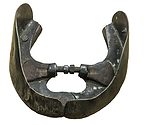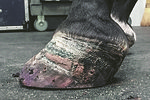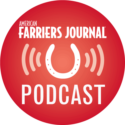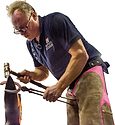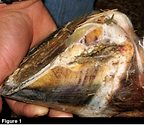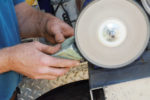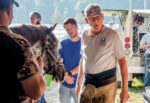Advertise Follow Us
American Farriers Journal
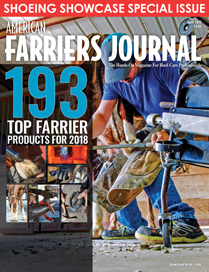
View Archived Issues
April 2018
Volume: 44
Edition: 3
American Farriers Journal is the “hands-on” magazine for professional farriers, equine veterinarians and horse care product and service buyers.
-
Table Of Contents
Table Of Contents
How Can Farriers Protect Their Interests?
American Veterinary Medical Association’s proposed elimination of farrier exemption underscores industry’s call to actionRead MoreSevere White Line Disease Causes Serious Problems
Infection leads to hoof capsule destabilization and coffin bone displacement in a Western Pleasure mareRead MoreOpinions on Preventing and Treating White Line Disease
Hoof wall separation opens the door to the dreaded bacterial and fungus infectionRead MoreSearching for the Missing Puzzle Piece in Problem Feet
Life Data Labs unveils new research project to study mineral contentRead MoreEquine Education Between Your Barn Stops
Podcasts can make the time you spend driving more productiveRead MoreThe Man with a Plan
Hall Of Fame Farrier Billy Crothers shares how to improve your efficiency when forging horseshoesRead MoreAnswering Clients’ Supplement Questions
Optimal nutrition can support hoof health and make your job easierRead MoreBeware of Scabs When Repairing Quarter Cracks
Recognizing, removing and drying wounds is critical for a successful patchRead MoreThe Nitty Gritty On Compounds
Understand the condition of your blade and what needs to be accomplished before choosing a compoundRead More9 Critical Propane Safety Tips
Avoid potentially volatile situations by understanding the gas and frequent checksRead MoreIs Solar Power Worth Your Investment?
Consider the pros and cons before investing in an inverter for your rigRead MoreResearch Journal: April 2018
The information, ideas and opinions expressed are those of the author and do not necessarily represent those of the United States Department of Agriculture.Read More -
Featured Articles
Featured Articles
The Man with a Plan
Hall Of Fame Farrier Billy Crothers shares how to improve your efficiency when forging horseshoesRead MoreSevere White Line Disease Causes Serious Problems
Infection leads to hoof capsule destabilization and coffin bone displacement in a Western Pleasure mareRead More - Digital Edition
-
Online Extras
Online Extras


